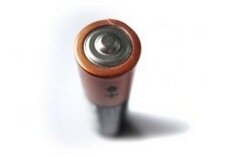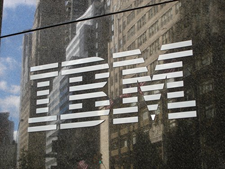Recent articles
-
Friday, June 3, 2011 - 5:23pm
-
Sunday, May 29, 2011 - 2:54pm
-
Friday, May 27, 2011 - 5:21pm
-
Thursday, May 26, 2011 - 9:07am
-
Monday, May 23, 2011 - 9:10am
-
Sunday, May 22, 2011 - 4:54pm
-
Friday, May 20, 2011 - 4:07pm
Recent comments
-
90 mph solar car makes Chevy Volt look tameIt sound a bit unrealistic ...Saturday, June 4, 2011 - 9:46am
-
Sprint putting money where its mouth is with phone buyback improvementsIt's a good initiative but at ...Saturday, June 4, 2011 - 3:30am
-
Solar cell in Apple iPhone 5, & next iPad may give Apple a leg upIf Apple decides to use the ...Saturday, June 4, 2011 - 3:22am
-
Mini’s electric scooter combines smartphone tech & sex appealElectric scooter are becoming ...Friday, June 3, 2011 - 3:11am
-
Barnes & Noble’s Nook hits Best Buy, new versions coming soonhopefully soon they will have ...Thursday, June 2, 2011 - 1:02pm
-
BMW chasing electric car mark with the BMW i, but it may be too slowBMW has given some good ...Thursday, June 2, 2011 - 2:54am
About Tainted Green
Why Tainted Green? Literally, green is only a color. But in typical human fashion we've pumped a cacophony of additional meanings and symbolism into the word. Green has become a marketing tool used by companies with impunity to wrap their products in a balmy haze of "ethical" and "conscientious" approval.
That's where Tainted Green steps in. We are seekers of truth, and we support the fundamental drivers behind the green movement. Ideas like permaculture, renewable energy, and recycling make sense, but companies that express support for green without a wholesome process behind it have tainted the meaning of green. And so, our focus is to create green content that pushes the ideology forward while pointing out which parts look like this year's marketing baggage. Welcome to Tainted Green, where we focus on unearthing the truth about green.


 EV skeptics are among us! And one of the favorite arguments they use is »what about the EV batteries?! Li-Ion-powered EVs and PHEVs pollute more than regular cars!«
EV skeptics are among us! And one of the favorite arguments they use is »what about the EV batteries?! Li-Ion-powered EVs and PHEVs pollute more than regular cars!« Commonly found in seas, soils and animal intestines, bacteriophages may someday find a home in our clothes, cell phones and laptops. Actually a type of virus, bacteriophages act like microscopic hitmen and target only certain strains of bacteria while leaving plant and animal cells, like our own, alone. Researchers from MIT report progress in harnessing bacteriophages to make better batteries.
Commonly found in seas, soils and animal intestines, bacteriophages may someday find a home in our clothes, cell phones and laptops. Actually a type of virus, bacteriophages act like microscopic hitmen and target only certain strains of bacteria while leaving plant and animal cells, like our own, alone. Researchers from MIT report progress in harnessing bacteriophages to make better batteries. Not more than a week ago, it felt as though Fisker had the car to compete with the likes of the Chevy Volt and Tesla Roadster. With sporty luxurious designs and high performance plug-in technology, Fisker Automotive's electric cars promised to utilize Henrik Fisker's BMW background to engineer top tier electric and hybrid cars. That was, however, before Fisker lost the power behind its electric engine.
Not more than a week ago, it felt as though Fisker had the car to compete with the likes of the Chevy Volt and Tesla Roadster. With sporty luxurious designs and high performance plug-in technology, Fisker Automotive's electric cars promised to utilize Henrik Fisker's BMW background to engineer top tier electric and hybrid cars. That was, however, before Fisker lost the power behind its electric engine. The recent advent of electric and hybrid cars to mainstream consumers is driving an intense interest in battery technology. Eestor has secretively been working on an ultracapacitor battery it claims will eclipse current lithium-ion and lead-acid batteries. Though the company has built volumes of buzz by keeping the curtain low, IBM is stealing some thunder with its commitment to create a battery that will enable 500 miles of travel on single charge.
The recent advent of electric and hybrid cars to mainstream consumers is driving an intense interest in battery technology. Eestor has secretively been working on an ultracapacitor battery it claims will eclipse current lithium-ion and lead-acid batteries. Though the company has built volumes of buzz by keeping the curtain low, IBM is stealing some thunder with its commitment to create a battery that will enable 500 miles of travel on single charge. The danger surrounding the shipment of lithium-ion batteries is causing many to rethink the lithium-ion craze that has blossomed with hybrid cars, cell phones and laptops. When first introduced, lithium-ion batteries returned impressive specs that challenged the conventional battery and opened a window of opportunity for a better, longer lasting battery. But was the winning battery chosen too soon?
The danger surrounding the shipment of lithium-ion batteries is causing many to rethink the lithium-ion craze that has blossomed with hybrid cars, cell phones and laptops. When first introduced, lithium-ion batteries returned impressive specs that challenged the conventional battery and opened a window of opportunity for a better, longer lasting battery. But was the winning battery chosen too soon? As the hybrid car craze accelerates, both by consumer demand and government backing, more companies and researchers are being advantageous of the primed hybrid car market by trying to gain battery supremacy. The latest improvement by a Japanese company, AIST, may push the envelope further with a viable lithium-air battery that cruises by the snags that others have been unable to surpass.
As the hybrid car craze accelerates, both by consumer demand and government backing, more companies and researchers are being advantageous of the primed hybrid car market by trying to gain battery supremacy. The latest improvement by a Japanese company, AIST, may push the envelope further with a viable lithium-air battery that cruises by the snags that others have been unable to surpass. Eestor has shrouded itself in mystery, and if the promises it’s making about a new ultracapacitor battery in 2010 are true that certainly makes sense because other companies would kill for that sort of leap in efficiency. Zenn Motor Company has invested enough to earn a 10.7% ownership stake in Eestor with its latest payment at $700,000.
Eestor has shrouded itself in mystery, and if the promises it’s making about a new ultracapacitor battery in 2010 are true that certainly makes sense because other companies would kill for that sort of leap in efficiency. Zenn Motor Company has invested enough to earn a 10.7% ownership stake in Eestor with its latest payment at $700,000.
 EEstor is a company focused on living out its infancy and childhood in complete secrecy. That’s a good plan considering how valuable its ultracapacitor battery will be, IF its claims are true. EEstor just loosened a chink in its aura of mystique though with approval of a new patent posted publicly online. Incidentally, the patent also makes EEstor seem just a bit more real.
EEstor is a company focused on living out its infancy and childhood in complete secrecy. That’s a good plan considering how valuable its ultracapacitor battery will be, IF its claims are true. EEstor just loosened a chink in its aura of mystique though with approval of a new patent posted publicly online. Incidentally, the patent also makes EEstor seem just a bit more real.